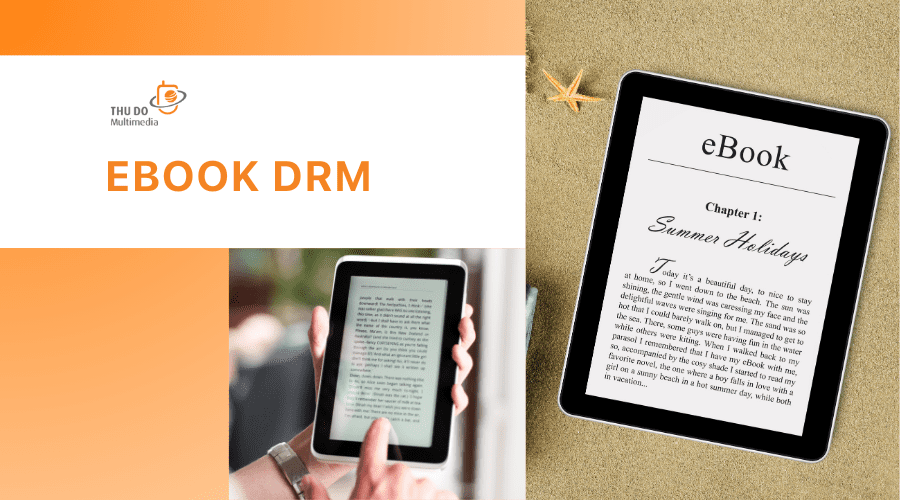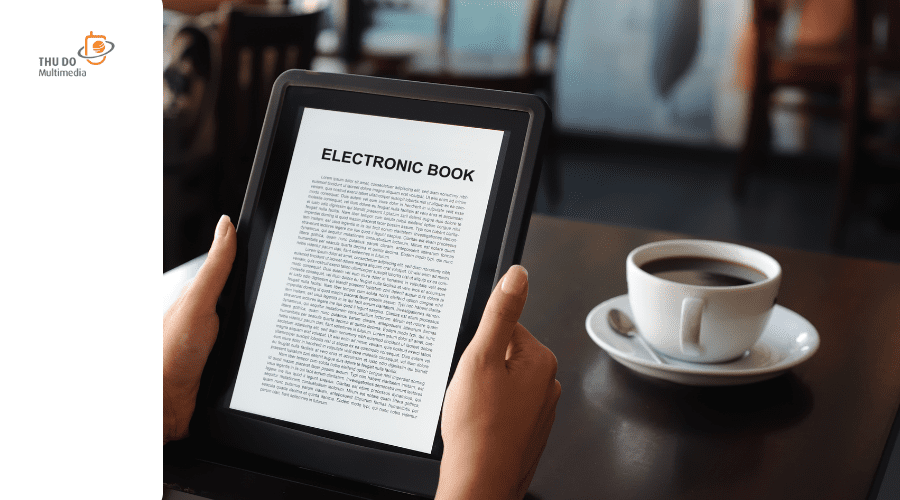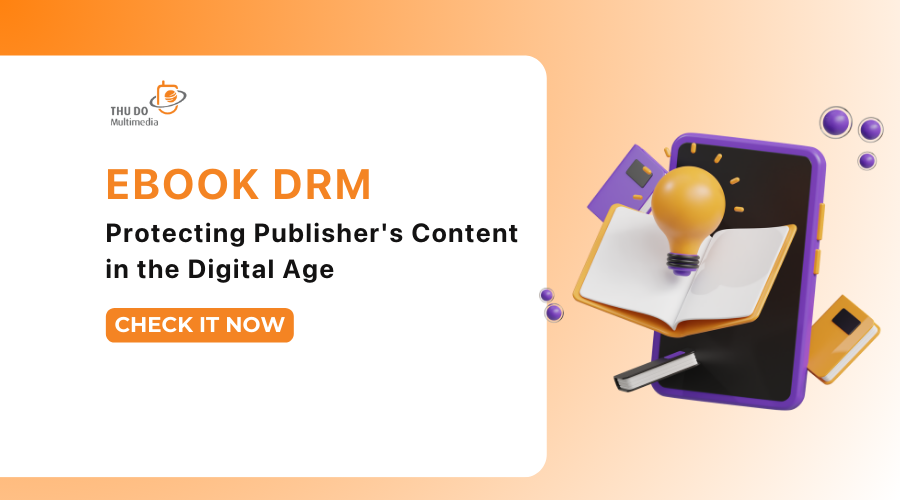Discover what eBook DRM is and how it safeguards digital content. Learn about Thu o Multimedia’s robust DRM solutions to protect eBooks from piracy while ensuring secure distribution and user-friendly access for publishers and authors
What is eBook DRM
Digital Rights Management (DRM) is a technological solution aimed at preventing unauthorized access, copying, and distribution of digital content. This is particularly relevant to eBooks, where the ease of digital sharing can lead to copyright infringement. eBook DRM, therefore, serves as a protective shield for authors and publishers in the digital realm.
Thu Do Multimedia is a leading provider of DRM services for eBooks. Their solutions enable secure distribution while preserving the rights of creators and publishers. With their expertise and innovative approach, they offer strong protection against piracy in our increasingly digital world.
Let’s begin our journey to understand eBook DRM better and discover why it’s so essential for publishers in our technology-driven era.
The Significance of eBook DRM in Protecting Publisher’s Content
The digital world is a constant battleground for publishers as they face the constant threat of piracy. File sharing platforms and digital publishers often struggle with the unauthorized sharing of content, which can have a huge impact on their earnings and intellectual property rights. The main problem here is how easily digital books can be copied and shared online without any protection.
Digital Rights Management (DRM) is the solution to this problem. It acts as a shield, preventing those who want to illegally distribute copyrighted works from doing so. DRM ensures that eBooks can only be accessed on specific devices or apps linked to the buyer, making it difficult for piracy to thrive.
Thu Do Multimedia is a leading provider of DRM services for eBooks, understanding the importance of striking a balance between security and user-friendliness.
With Thu Do Multimedia’s DRM services, publishers can effectively protect their digital assets from the risks posed by modern file-sharing technologies. This security goes beyond just preserving earnings; it also helps maintain the value of content in an increasingly digital world where consumption habits are changing rapidly.
Read More: DRM Solution: Invest 1 Get 10 for Media Content Management for Business
How Does eBook DRM Work?
At the core of eBook DRM is encryption—a process that converts readable content into a coded format that can only be unlocked with a specific key. This key ensures that only authorized users, usually those who have purchased or obtained the eBook through legal means, can access the content. Here’s how encryption and DRM systems work together to protect eBooks:
- Encoding Content: When an eBook is published, its content is encoded using sophisticated algorithms. This encryption makes the text unreadable to anyone without the appropriate decryption key.
- Device or App Authentication: The decryption key is tied to the purchaser’s account, device, or application. This means when an eBook is downloaded, it can only be read on devices or apps authorized by the user’s account.
- Restricting Actions: Beyond just reading, DRM systems can restrict actions such as copying text, printing pages, or sharing files. These restrictions are embedded within the eBook file itself.
- Dynamic Management: Publishers can update or change the rights associated with an eBook post-distribution. If necessary, they can revoke access or modify usage rights through remote updates to the DRM system.
Encryption and DRM systems work together to create a digital barrier against piracy. By controlling who can read an eBook and what they can do with it, these systems play a crucial role in protecting the rights of publishers and authors in the digital world.
While encryption is important for DRM in eBooks, it’s just one part of a larger system designed to protect digital content from unauthorized distribution. The effectiveness of these measures depends on strong technology and ongoing management—areas where providers like Thu o Multimedia offer expert solutions.
Read more: DRM Prevent Unauthorized Access to Digital Content?
Different Types of eBook DRM Systems
Publishers and content distributors use different proprietary DRM systems to protect their digital books from unauthorized access and sharing. Some of the notable ones are Kindle books, FairPlay DRM, and Adobe DRM, each with its own characteristics and limitations.
Kindle Books
Amazon’s Kindle platform uses its own DRM scheme that links eBooks to a user’s Amazon account, limiting the reading to Kindle devices or apps. This system ensures that only the buyer can access the eBook, but it restricts compatibility with other platforms.
FairPlay DRM
Created by Apple, FairPlay DRM is employed for Apple Books and confines content to be read solely within the Apple ecosystem. While it provides a seamless user experience through its close integration with Apple hardware, it can be limiting for those who use non-Apple devices.
Adobe DRM
Adobe’s solution is widely adopted by several major eBook retailers like Barnes & Noble, Google Play, and Kobo. It allows eBooks to be read on various devices using compatible software such as Adobe Digital Editions. While offering broader device support, it can be inconvenient for users due to complex authorization processes.

Read more: Protect Your Music Treasure With Sigma DRM Music In 2025
Pros and Cons of Implementing eBook DRM Strategies
Implementing eBook DRM strategies has its fair share of advantages and drawbacks. On the positive side, it provides:
- Secure distribution: eBook DRM strategies ensure that only authorized users have access to the content. This secure distribution model minimizes the risk of piracy, thus protecting publishers’ revenue streams.
- Enhanced interactivity: Some DRM systems enable interactive eBook features. These enrich the reading experience by adding audio, video, or other interactive elements to the eBook content.
- Compliance with legal requirements: DRM helps publishers adhere to legal regulations. For instance, the Sarbanes-Oxley Act (SOX) enforces strict auditing standards for digital assets. A robust DRM strategy can help meet these requirements and avoid legal issues.
On the flip side, implementing eBook DRM strategies may have certain limitations:
- User access issues: If a DRM system is overly restrictive, legitimate users may face challenges in accessing their purchased content across multiple devices.
- Potential for circumvention: While DRM strategies aim to deter piracy, tech-savvy users may find ways around these protections, rendering them ineffective in some cases.
- Customer dissatisfaction: Strict DRM measures might reduce customer satisfaction. Readers could feel penalized for actions that would be perfectly legal with physical books, such as lending a copy to a friend.
It’s clear that deploying an effective and balanced eBook DRM strategy requires careful consideration of these pros and cons. The following sections will delve further into the challenges and future trends of eBook DRM technology.
Challenges and Future Trends in eBook DRM Technology
Challenges in DRM Effectiveness
The digital landscape is always changing, with constant advancements in ways to get around DRM. This makes it difficult for DRM systems to stay effective. As soon as new DRM technologies are created, new ways to pirate content appear. Dealing with this ongoing battle requires finding a balance between strong security measures and easy access for users.
Emerging Trends: PDF to ePub3 Conversion
Looking towards the future of eBook DRM technology, one emerging trend is the move from PDF files to ePUB3 software. The switch to ePUB3 is motivated by its improved security features and better usability.
Unlike PDFs, which are basically digital copies of physical pages, ePUB3 files are flexible and adaptable. They can change size and layout to fit different screens and orientations, making them easier to read on various devices. From a security standpoint, converting from PDF to ePub3 provides better options for encrypting content and making it harder for unauthorized people to access.
This shift in conversion is an important step towards making eBooks more secure while also enhancing the user experience. It shows that the industry is committed to adapting and coming up with new ideas in order to deal with ongoing challenges.
As we continue moving into the digital age, eBook DRM will keep changing. It will be important for publishers to stay ahead of methods used to get around DRM while also embracing new trends like PDF to ePub3 conversion in order to protect their content now and in the future.

Explore: Piracy Detection: Protecting Your Media Content and its Revenue by Sigma Multi-DRM
Exploring Alternatives eBook DRM: Is DRM-Free the Way to Go?
In the debate around eBook protection, some people argue for a no DRM option, saying it could make readers happier and possibly reduce piracy by removing the need for workarounds. This idea is based on the belief that most consumers will follow copyright laws if they aren’t too restricted.
Legal sharing options already exist but are often tightly controlled. For example, Amazon’s limited lending program allows eBook sharing under specific conditions, trying to find a balance between user convenience and copyright protection. These programs show that reading is a social activity and there can be advantages to officially allowing sharing.
The success of DRM-free eBooks and limited lending programs depends on a few things:
- Consumer Trust: Hoping that buyers will honor copyright agreements even without technology forcing them.
- Author and Publisher Support: Making sure creators are okay with less strict ways of distributing their work.
- Impact on Sales: Keeping an eye on whether DRM-free options change how much people buy eBooks, either in a good or bad way.
Choosing to offer DRM-free content could be an interesting step toward putting users first in digital publishing, which might lead to more loyal customers and a better brand image. The industry is still looking into these alternatives while trying to find a balance between protecting intellectual property rights and giving legitimate users more freedom.
eBook DRM Solution from Thu Do Multimedia
As we navigate the digital publishing landscape, DRM-protected eBooks remain a cornerstone of content protection. Thu Do Multimedia stands at the forefront of this industry, providing cutting-edge DRM solutions tailored to meet the dynamic needs of publishers.
Ensuring robust protection for digital content is our foremost priority. We understand that every publisher’s needs are unique and offer DRM solutions designed to match these distinctive requirements. Our solutions extend beyond mere prevention of unauthorized copying, enhancing eBook interactivity and usability.
Here’s what sets Thu Do Multimedia’s DRM solutions apart:
- Adaptable: Our solutions can seamlessly adapt to different publishing platforms and formats.
- User-friendly: While maintaining high levels of security, we ensure an enjoyable reading experience for end-users.
- Compliant: All our DRM solutions adhere strictly to legal requirements, ensuring you stay on the right side of the law.
In an era where piracy is a pervasive threat, Thu Do Multimedia remains committed to safeguarding your content. By investing in our DRM services, publishers not only protect their assets but also contribute towards a sustainable digital publishing industry. As we continue to innovate, we invite you to join us in this journey towards creating a secure environment for digital content.


Recent Comments